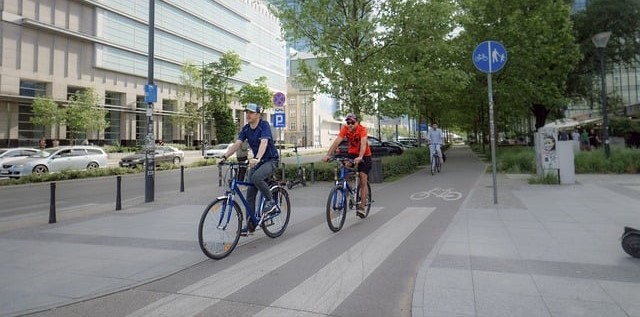In recent years, the streets have seen a refreshing surge in the number of cyclists pedaling their way to work, school, or daily errands. Commuting by bike has transformed from a niche activity to a thriving movement, capturing the hearts of individuals and transforming cities for the better..
The Numerous Benefits of Commuting by Bike
Commuting by bike offers a plethora of advantages that go beyond just getting from point A to point B. Firstly, it promotes physical health and well-being, providing an opportunity for regular exercise and improving cardiovascular fitness. It’s a fantastic way to kick-start the day with fresh air and energy.
Additionally, bike commuting is a green and eco-friendly choice. By choosing a bike over a car, you significantly reduce your carbon footprint, contributing to a cleaner environment and fighting climate change. This collective effort can make a profound impact on reducing pollution and creating more sustainable cities.
Moreover, bike commuting can be kind to your wallet. With the rising costs of fuel, public transportation, and parking fees, cycling offers a cost-effective alternative. You’ll save money on transportation costs while also avoiding the stress of traffic jams and delays.
Personal Anecdotes from Fellow Cyclists

The transformative power of bike commuting can be seen through the inspiring stories of fellow cyclists. I had the pleasure of meeting Sarah, a graphic designer who began cycling to work six months ago. She shared how her daily bike commute not only helped her shed a few pounds but also boosted her creativity and productivity. “The morning ride clears my mind and fills it with inspiration, making me more focused and enthusiastic about my work,” she said.
Tips for Bike Commuting Beginners
If you’re new to bike commuting, here are some practical tips to get started:
- Choose the Right Bike: Invest in a reliable bike suitable for your daily needs and terrain. Consider factors like comfort, durability, and storage options.
- Safety First: Wear a helmet, use lights, and invest in reflective gear to enhance your visibility. Follow traffic rules and stay alert at all times.
- Plan Your Route: Before you begin, plan your route and try it out on weekends to gauge the time and challenges it presents. Opt for bike lanes and quieter roads where possible.
- Overcoming Challenges: Inclement weather or long distances can be daunting. Consider using public transportation or carpooling on challenging days, and gradually build up your cycling endurance.
Bike-Friendly Initiatives and Communities
Many cities now have dedicated bike lanes, bike-sharing programs, and cycling communities that support and encourage bike commuting. Seek out local initiatives and organizations that provide resources, safety workshops, and community events to connect with other cyclists.

Creating a Routine and Setting Goals
To sustain your bike commuting habit, establish a routine and set realistic goals. Start by commuting on specific days of the week and gradually increase the frequency as you become more comfortable. Having a consistent routine will help make cycling a natural part of your lifestyle.
Overcoming Barriers
Bike commuting may come with its challenges, such as adverse weather conditions or a lack of cycling infrastructure. On rainy days, waterproof gear can keep you dry, and opting for public transportation or carpooling can be a temporary solution. Advocate for better cycling infrastructure in your city to improve conditions for cyclists and pedestrians alike.
Fostering Community and Influencing Urban Planning
Bike commuting not only connects individuals but also fosters a sense of community and camaraderie. By choosing to commute by bike, you become part of a larger movement that advocates for better urban planning and transportation policies. Increased support for cyclists can lead to safer roads and a healthier, more sustainable urban environment.

